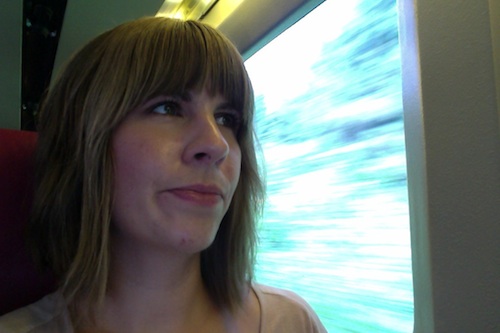Next week marks my last week of actually “residing” at TPW’s R&D space in the first phase of my curatorial residency there. There are finally some things up on the wall, and audio excerpts from the “Unshowable Photographs” panel discussion playing, and a wall painted purple with some vinyl text on it announcing the project.
It’s amazing what a difference some of those small but recognizable exhibition gestures make in terms of public response and interest. TPW R&D’s new space—a storefront that features a prominent bay window that spills out directly onto Dundas Street West—invites a lot of looking from the street as people pass by on the sidewalks, but until now there hasn’t been much to see, aside from me sitting at a desk, or chatting with folks. But now that it looks like something gallery-like is happening, more people are coming in, asking questions, wanting to look at images and chat (even if I feel like I am doing a less-than-articulate job of explaining what it is I’m trying to do here).
While this in itself has been an interesting experiment in how viewers respond to particular display strategies, it’s the conversations that I’ve had with visitors, friends and colleagues that have raised some of the most troubling (in a good way) questions. Especially around the self-imposed pressures I think many of us—curators, artists, academics, and gallery workers—feel to have what are usually called “outcomes” in the world of academia and grant proposals: to produce something tangible and often visual that demonstrates that work is being done. It is slightly uncomfortable to sit in an empty-looking space and to implicitly make the argument that “something” productive is still happening, even if it is tricky to see or recognize.
In some ways, it feels refreshing to push back against the imperative to manically produce content through the recognizable rituals of exhibition-making, and it feels like a huge privilege to have the space and time to think about other ways of presenting research and images. But I also feel quite attached to public forms of presentation and discussion, and especially the space of the gallery as a productive one where difficult conversations can unfold in a way they might not in other venues. And most of the work I do, curatorially and academically, emerges out of an object or image: something specific and material that I feel the need to work through by talking, out loud or through exhibitions and texts, to an audience. One of the challenges of the R&D residency is using new presentation and discussion strategies to reach audiences differently, both to convince the gallery’s audience to come and experiment in a way that does not follow the traditional photography exhibit/video installation format, and to attract new, different audiences who might be looking for a space where these kinds of discursive events could take place.

